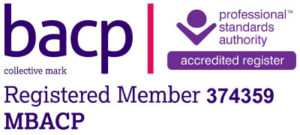‘Functional neurological disorders’ (FNDs) is the current label for conditions which in the past used to be referred to as psychosomatic disorders. They are dependent on physiological processes in the brain over which we have no control. Dissociation is one such biological process and predictive coding is another. Predictive coding creates real physical symptoms out of expectations that are programmed into our brain networks. It is a physiological and psychological process that is important for our normal daily functioning – but, when it goes wrong, it can create disability.
Our brains don’t just accept new information as if inputting it into a computer. New experiences are interpreted based on how the brain has been primed by past learning and experience. The world is just too full of information and sensory experience for us to be able to take it all in and interpret it afresh every time. Instead, through unconscious mechanisms, external information is filtered out (for example, the feeling of clothes against your skin) and what remains is assessed according to experience (I can make it across the road before that car gets to me). Visual processing provides a good example of how the top-down processing system involved in predictive coding works. As sensory information enters, it is being compared to our expectations drawn from existing knowledge and is being manipulated to fit with those expectations. As we look at a scene, the visual-processing centre adds and subtracts elements. It helps us focus on the object of our attention and filters out things that are unimportant in the moment. It compares what we are looking at with objects familiar to us. It judges speed and colour and depth. So, as visual sensory information enters from below, our brains are working at a higher level to make sense of it. Our brains manipulate images so that what we see is not faithful to the scene, like a photograph, but is instead an interpretation of the scene. That is the reason we can read lots of different styles of handwriting. The brain puts the various swirls and shapes in the context of a sentence, compares it to the known alphabet and makes a best guess which is why we can read nonsense sentences like this: Y0UR M1ND 15 R34D1NG 7H15 4U70M471C4LLY W17H0U7 3V3N 7H1NK1NG 4B0U7 17.
Predictive coding has been used as a model to explain many different FNDs. It suggests that we all have prior expectations coded into our brains, telling us how our bodies will behave in response to a particular situation. Neuroscience often refers to the brain’s coded expectations as templates or priors. Priors make us more efficient and allow us to negotiate the world more easily. They serve an important function. However, they are not necessarily always accurate, they are a well-educated guess. If the guess is wrong and the input signal doesn’t match the priors, there has been a prediction error. That offers a dilemma with two possible solutions. The brain may alter the priors to incorporate the new incoming signal, and therefore learn from the new experience. Alternatively, the brain may process the incoming signal to fit with the priors. The brain could therefore process the same experience in two entirely different ways, and it does this with every type of sensory input. The brain commonly alters our experience of sensory stimuli unbeknown to us, and our general well-being at any given moment will have some impact on which route the brain will take. When we are feeling vulnerable, we are more likely to reach for the negative result.
Inaccurate expectations can be an important feature in the development of FNDs. Priors affect how we interpret and react to bodily changes. This is an unconscious brain process. If physiological processes like prediction errors are indeed responsible for creating the disability of psychosomatic and functional disorders, that should not be understood to mean they are just biological conditions and that psychosocial vulnerability, personal conflict and social influences are irrelevant. They are often the trigger. When faced with conflict or unhappiness, we may notice physical changes, act them out based on templates and use them to ask for help or to solve a problem. We are more resilient to illness when things are going well for us.
When we have a thought or feel an emotion, something organic (physiological) is happening in our brain to create it. In the medical field, the term ‘organic’ is generally used to refer to a pathological change in an organ, while ‘non-organic’ refers to a disorder that has a psychological cause. These terms have become problematic because many people, both medical and non-medical, extrapolate the ‘organic’ and ‘non-organic’ division into meaning that symptoms are either ‘real’ or ‘not real’. Therefore, someone who has a stroke is referred to as having an organic brain disease, and they are considered to be ‘really’ paralyzed, whereas somebody who has an FND is considered to have a psychological problem, and so they are not ‘really’ paralyzed. With that sort of interpretation of what it means to have an FND, people unsurprisingly often reject such diagnoses. Whatever you call these disorders – functional, psychosomatic, biopsychosocial, conversion, non-organic – they all arise because of physiological mechanisms that go awry to produce genuine physical symptoms and disability.
Although FNDs are often explained by a simple cause-and-effect model between stress and physical symptoms, there are actually a multitude of mechanisms through which they can develop, and the interaction between mind and body doesn’t have to start with psychological distress; it is a two-way street. FNDs are created by traffic in either direction and are exacerbated by feedback loops between the two. Sometimes the psychological provocation comes first, and the physical consequences come later, but sometimes it works the other way around so the psychological contributors to illness may be negligible at the start.
By referring to FNDs as the embodiment of anxieties, following cultural templates, or as a language of distress, risks misunderstanding; it could cause them to fall into the hazy category of counterfeit illness, not real, all in the head, faking it, when, the opposite is true. They are as real as any other medical disorder; they arise from the fallibility of cognitive processes and have a corresponding physiological change. An equally worrying extrapolation from the idea that organic is real and non-organic is not real is to say that non-organic therefore must be less serious and less disabling. A common argument from people who are finding it hard to accept the diagnosis of an FND is to say that symptoms feel too severe to be considered ‘psychological’. But there is no correlation between the severity of disability and the type of disease process. A person with multiple sclerosis may have minimal symptoms, while a person with a functional neurological disorder could be bed-bound. Dissociative seizures usually last longer, are more frequent and more likely to require hospitalization than the seizures that occur in epilepsy. ‘Psychosomatic’ and ‘functional’ do not imply less severe or less disabling – far from it.
Another common mistaken belief is that psychosomatic disorders are mostly self-limiting and cannot cause sustained disability; for many people, they are a self-perpetuating phenomenon and often chronic. The artificial division of medical conditions into organic and psychological has made it surprisingly easy for society and the medical system to leave sufferers without active treatment while debating who is responsible for them. FNDs are usually anatomically and biologically impossible. Symptoms come from the unconscious and are based on people’s understanding of how the body works – but those understandings are usually inaccurate. Unfortunately, some doctors still do not know the difference between malingering and FNDs, and it is the confusion between functional and faked that explains why many ordinary people are devastated by an FND diagnosis – they fear the judgement it will bring.
The presence or absence of illness and disease are not unalterable scientific facts, as many suppose them to be. Certainly, some diseases are blatant – you either have them or you don’t. But many are not as black and white as that. People regard medical diagnoses, especially those based on scientific-looking test results, as infallible truths, when, in fact, they are only too fallible. Illness is a perception of how we feel and does not need to be associated with a disease; it is defined by the person who has it and the doctor who gives it a name, and as such it will be an inherently cultural phenomenon. We are measured against others in our society. Being healthy may just mean being healthier than the people around us. Western medicine’s sense of being systematic and accurate, makes it a powerful force in the transmission of cultural concepts of what constitutes wellness or ill health. But Western medicine is just as enslaved to fads and trends as any other tradition of medicine. Much of today’s science will not be considered science in fifty years. The opioid crisis and the problem of antibiotic overuse leading to antibiotic resistance do not seem to have done anything to dampen enthusiasm for over-medicalization. Westernized society sadly has less time for psychological suffering than for other sorts.
FNDs are the brain’s coding errors. They have numerous triggers, only some of which are related to psychological distress. They can be a response to injury, disease, false medical beliefs, hardship, conflict, or contagious anxiety, and they are most definitely not “all in your head”. Disability can develop through a process akin to learning, but brains that have been ‘programmed’ can be ‘unprogrammed’, so that should never be an irreversible process. Counselling and psychotherapy can offer effective ways of ‘unprogramming’.




